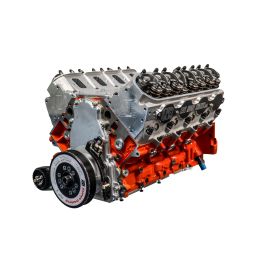Hi there,
Im still learning...but what is up with this engine?
I thought 427's naturally aspirated top out around 500HP or so...throw in some error if you want to but how is a 2500HP engine possible with the same displacement, and same stroke?
I get that they can vary, but even 2000HP is hard to get to without major engine mods...is there something obvious about the LSX I dont know?

 latemodelengines.com
latemodelengines.com
Im still learning...but what is up with this engine?
I thought 427's naturally aspirated top out around 500HP or so...throw in some error if you want to but how is a 2500HP engine possible with the same displacement, and same stroke?
I get that they can vary, but even 2000HP is hard to get to without major engine mods...is there something obvious about the LSX I dont know?

427
This is the absolute proven combination that gives you 2500+ horsepower at your disposal. The solid foundation starts with your choice of blocks; the rigid piece from Dart or direct from GM, with the mighty LSX. Both feature remarkable improvements to the oiling system and cast with exceptional...

